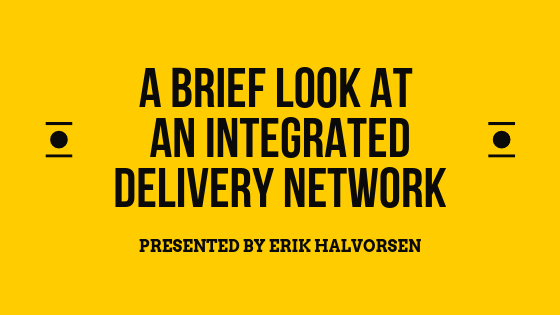Healthcare has changed a great deal in the past 50 years and current rising healthcare costs and consumer demand for better and more convenient services will certainly usher in a new era of how healthcare is delivered.
One particular organizational structure for delivering healthcare is known as an Integrated Delivery Network (IDN). While there is no absolute definition of what is and is not an IDN, basically it is a system of providers of care that provides health care services and offers a health insurance plan to patients in a defined geographic area. IDNs seek to achieve the goal of offering a seamless continuum of care at the lowest cost by keeping everything “in network”. Leveraging the electronic medical record, complete with the patient’s health history, and the fact that most IDNs tend to have patients and families that are longer-term members than the average private health plan enable doctors to more effectively diagnose patients, avoid medication interactions, reduce duplication testing as well as enhance the security of patient data and improve productivity. Because the organization also includes a healthcare plan, there is more of a focus on health, wellbeing and early screening and intervention to keep patients healthy and out of the hospital.
IDNs are nothing new. One of the most well-known brands in the space is Kaiser Permanente, which emerged out of the industrial era nearly 80 years ago. IDNs like other traditional healthcare providers and hospital systems have primarily grown over the years via mergers and acquisitions. What’s is interesting is that the recent increase in IDN numbers and the growth of existing organizations is in part due to the Affordable Care Act (ACA), which nudged a shift from volume to value in regard to healthcare delivery. The focus, more so than ever, is placed on accountability and clinical integration. Another byproduct of the ACA is accountable care organizations. An accountable care organization (ACO) is similar to an IDN with the key difference is that an accountable care organization receives incentives for achieving measurable quality care and reducing costs and they do not offer healthcare plans.
According to Definitive Healthcare, there are nearly 1,700 accountable care organizations and nearly 1,000 IDNs. The largest accountable care organization is TMA PracticeEdge (Texas Medical Association – Blue Cross and Blue Shield of Texas ACO) with a patient population of 5,000,000 and the largest IDN is Ascension Health with 2,300+ facilities. Other notable IDNs include Geisinger Health, Northwell, Atrium, Intermountain Health, and the for-profit HCA.
As there are many IDNs, it is easy to identify the major ones since they share 5 common attributes per Decision Resources Group:
- Provider alignment development stage and physician data
- Continuum of care
- Clinical integration
- Regional presence
- Reimbursement
IDNs are not just “managed care” organizations focused on reducing costs—although clearly that is part of their mission. These integrated delivery networks are increasingly sources of innovation and early adopters of new technology. With several now having associated investment funds, they are potential investors in innovative healthcare technology companies. They are major players and influencers across the entire spectrum of healthcare innovation from ideation and R&D to testing and deployment, which can greatly affect the success or failure of new healthcare products ranging from digital health to diagnostics and devices.
It will be interesting to see the future of healthcare evolve; what is clear is that IDNs will be major drivers of that change.
Erik Halvorsen is the Chief Business & Strategy Officer at FAR Biotech. As a result of his industry experience, Erik is an often sought-after public speaker, and he has served as an advisor to various hospitals and start-ups. He is constantly looking for new ways to improve patients’ lives while changing the broader healthcare industry for the better. He has been referred to as a “translator,” in that he has the ability to speak science with businesspeople and speak business with science people.

